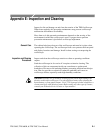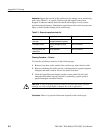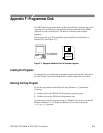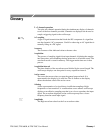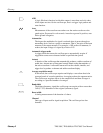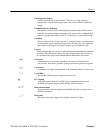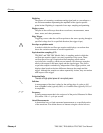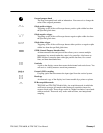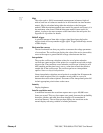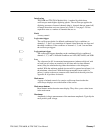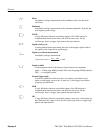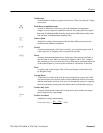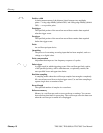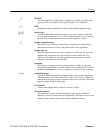
Glossary
Glossary–4
TDS 500C, TDS 600B, & TDS 700C User Manual
Digitizing
The process of converting a continuous analog signal such as a waveform to a
set of discrete numbers representing the amplitude of the signal at specific
points in time. Digitizing is composed of two steps: sampling and quantizing.
Display system
The part of the oscilloscope that shows waveforms, measurements, menu
items, status, and other parameters.
Edge Trigger
Triggering occurs when the oscilloscope detects the source passing through a
specified voltage level in a specified direction (the trigger slope).
Envelope acquisition mode
A mode in which the oscilloscope acquires and displays a waveform that
shows the variation extremes of several acquisitions.
Equivalent-time sampling (ET)
TDS 500C and TDS 700C Models Only: A sampling mode in which the
oscilloscope acquires signals over many repetitions of the event. These
oscilloscopes use a type of equivalent-time sampling called random
equivalent-time sampling, which uses an internal clock that runs asynchro-
nously with respect to the input signal and the signal trigger. The oscillo-
scope takes samples continuously, independent of the trigger position, and
displays them based on the time difference between the sample and the
trigger. Although the samples are taken sequentially in time, they are random
with respect to the trigger.
Extinction Ratio
The ratio of High optical power to Low optical power.
Fall time
A measurement of the time it takes for the trailing edge of a pulse to fall
from a HighRef value (typically 90%) to a LowRef value (typically 10%) of
its amplitude.
Frequency
A timing measurement that is the reciprocal of the period. Measured in Hertz
(Hz) where 1 Hz = 1 cycle per second.
Gated Measurements
A feature that lets you limit automated measurements to a specified portion
of the waveform. You define the area of interest using the vertical cursors.



